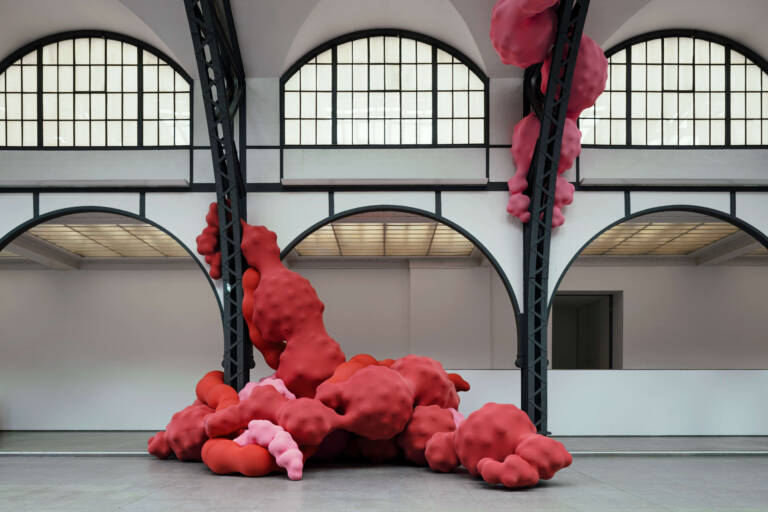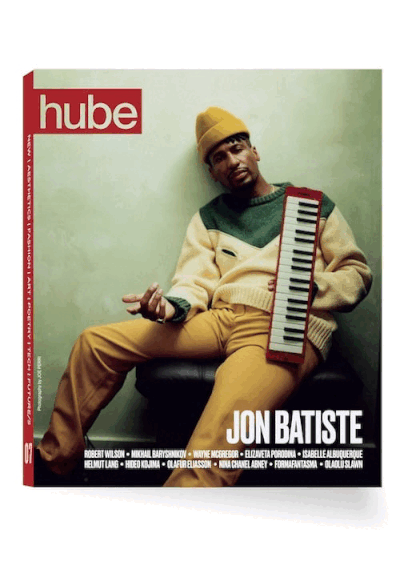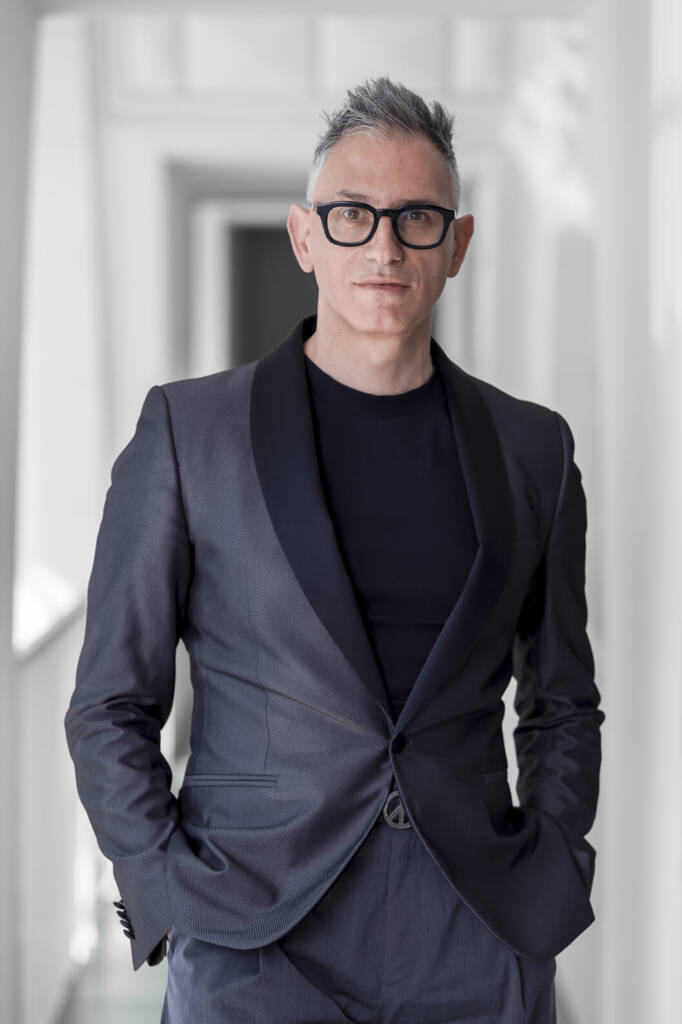
Photography by JACOPO LA FORGIA
Courtesy of STAATLICHE MUSEEN ZU BERLIN, NATIONALGALERIE
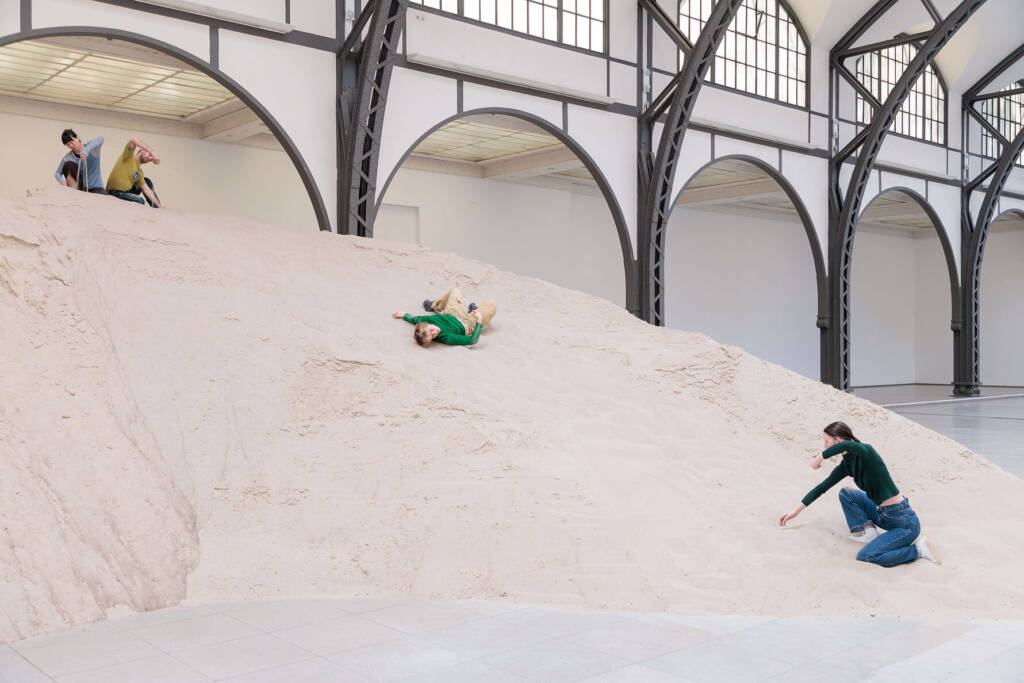
Photography by JACOPO LA FORGIA
Courtesy of STAATLICHE MUSEEN ZU BERLIN, NATIONALGALERIE
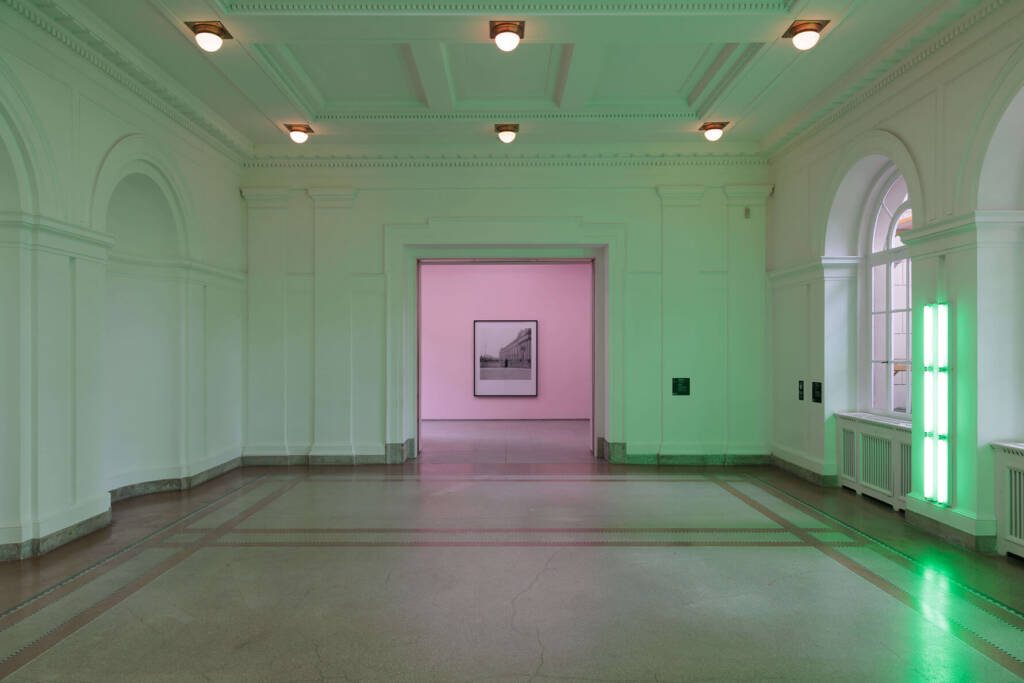
Photography by JACOPO LA FORGIA
Courtesy of STAATLICHE MUSEEN ZU BERLIN, NATIONALGALERIE
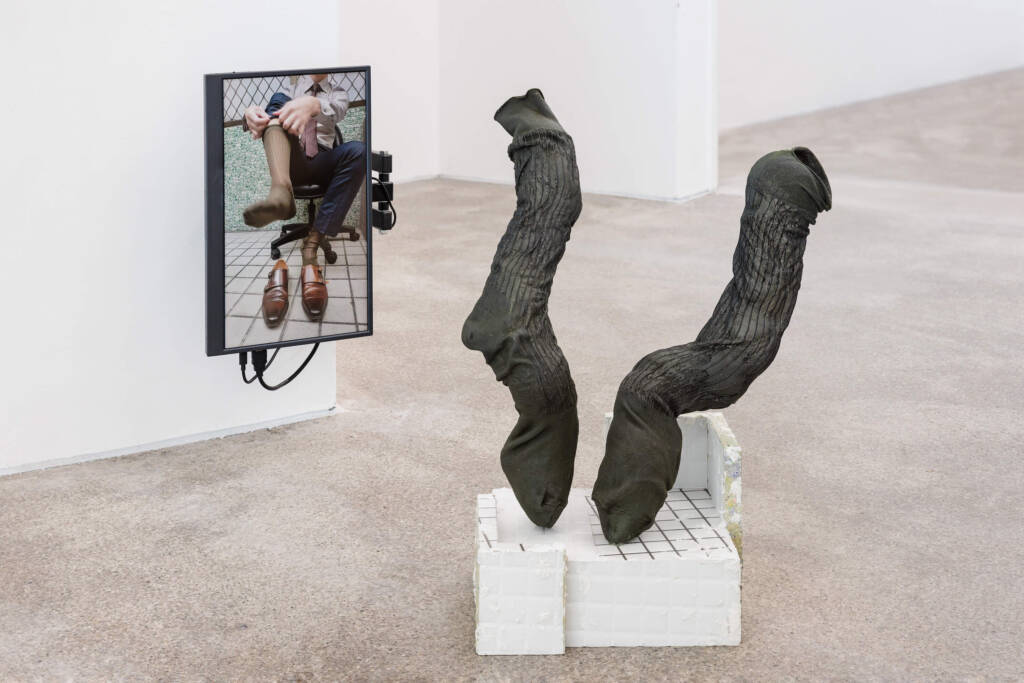
salaryman no.2, 2024, Suit socks bought from Taiwanese foot fetish online marketplace, wood, rubber, paper, celluclay, 37 x 23.5 x 52 cm, video monitor, 22.5 x 36 cm, 1’21”
Courtesy of NI HAO and COMMUNE GALLERY, Vienna. Photography by MANUEL
CARREON LOPEZ
Sam Bardaouil is a Lebanese-born curator, scholar, and writer who challenges established art histories, reinterpreting them with a critical perspective. Holding an MFA in Advanced Theatre Practice and a PhD in Art History, he co-founded artReoriented in 2009 with Till Fellrath. In 2022, the duo assumed the directorship of Berlin’s Hamburger Bahnhof – National Gallery of Contemporary Art, where Bardaouil envisions the museum as “a stage, a refuge, a battleground.”
Through his curatorial practice, Bardaouil creates projects that unsettle inherited canons and shape the ways collective memory is constructed and experienced. Together with Fellrath, he has organized major international exhibitions, including the 16th Lyon Biennale, Manifesto of Fragility, and the French Pavilion at the Venice Biennale. This year, the duo co-curates the Taipei Biennial, Whispers on the Horizon (November 1, 2025–March 29, 2026), which explores longing and fragility across generations and histories. In this conversation with hube’s editor-in-chief, Bardaouil reflects on the museum as a living, breathing space where freedom, memory, and collective responsibility intersect.
Sasha Kovaleva: Contemporary museums are becoming multidisciplinary spaces. Music, poetry, theatrical practices are infiltrating them. Is the museum now more than just a museum?
Sam Bardaouil: For me, the museum has always been more than a museum. It’s a stage, a classroom, a gathering place, a refuge, a battleground. At Hamburger Bahnhof, we invite music, poetry, performance into the space, not to decorate it but to test it—to see how far the walls can stretch. A museum today is not a building to be filled; it’s a living organism, breathing with the multiplicity of forms that culture takes.
SK: Is the constant rethinking of aesthetic, historical, and ethical heritage an inevitable necessity for society?
SB: It is not only inevitable, it is survival. Heritage is not a marble monument; it’s clay, constantly reshaped by our hands. To leave it untouched is to risk irrelevance. The rethinking is painful, because it forces us to confront our blind spots, our exclusions. But without it, society calcifies.
SK: The term “moral landscape” is often used to describe the relationship between individuals and society. What is the role of the curators in shaping this landscape?
SB: We are cartographers of ambiguity. We don’t dictate morality, but we map the questions, the contradictions, the dissonances. Curators hold open a space where people can confront their own role in the moral landscape. In that sense, our job is less about pointing to answers and more about refusing easy absolution.
SK: Freedom is one of the key concepts in the artistic process. Even if freedom can only be understood through limitations. How can a museum define its own freedom in its interaction with the work of artists?
SB: The museum’s freedom lies in restraint. To resist instrumentalizing artists, to allow their voices to exist in all their contradictions, even when they unsettle us. Freedom is not the absence of boundaries but the courage to redraw them together.
SK: In discussions about cities and the principles of their development, an important concept becomes the emotional infrastructure of the city. What elements, personally for you, form the emotional profile of Berlin?
SB: For me, Berlin’s emotional infrastructure is built of silences and ruptures. The gaps between buildings where history collapsed. The clubs where strangers hold each other until morning. The languages that collide in the U-Bahn. The scars of division, and the stubborn will to imagine something else. Berlin’s emotional profile is tension—between what is promised and what is withheld.
SK: Working closely with Till Fellrath for over a decade, how do you think shared leadership challenges conventional notions of authority within a cultural institution? How do you navigate the balance between individual vision and collective responsibility in practice?
SB: Shared leadership begins with humility. The recognition that no vision is ever singular, and that authority without accountability corrodes. With Till, our collaboration is a constant dialogue—a willingness to argue fiercely, but also to yield. That practice spills into the institution: decisions are never about ego, but about how the collective—the team, the artists, the public—is best served.
SK: Modern digital technologies are changing the way we perceive reality (however we might define this word), especially among younger generations. How has this affected the museum and the work of its curators?
SB: Technology has fractured reality into countless shards. For the museum, this is both a challenge and an opportunity. Our role is not to compete with the speed of digital culture but to offer a counter-tempo, a place where images can be held longer, where attention can stretch. At the same time, we embrace digital tools as languages of their own, as part of the artistic vocabulary of our time.
SK: Mythology is an important part of social culture. Modern institutions and curators shape not only the current cultural context but also artistic heritage. Do you feel a sense of responsibility for this role?
SB: Absolutely. To curate is to contribute to mythology—to decide which stories will echo into the future. That responsibility is immense. It requires vigilance: to avoid the temptation of canonizing too quickly, to leave space for voices that history has sidelined. My hope is that our work generates not one mythology but many, constantly intersecting and contradicting one another.
SK: In your personal experience, has there ever been a conflict between your professional and emotional relationship with art?
SB: Always. I don’t believe you can separate them. Every exhibition we shape, every work we hang, stirs something personal—joy, grief, longing, memory. The conflict is not a problem; it is the energy. Without it, the work would be sterile.
SK: The issue of personal and social identity—gender, aesthetic, national, intellectual—continues to divide people and create tension. Can art be a cure?
SB: Art is not a cure. It won’t heal the wound, but it will force us to look at it, to touch it, to share it. Sometimes that is enough—the recognition that we are not alone in our fractures.
SK: Let’s speak about the upcoming Taipei Biennial, titled Whispers on the Horizon. The theme of yearning seems both intimate and collective—how do you see it operating across generations and histories, especially in the context of Taiwan’s complex past?
SB: Yearning is the common denominator of human existence. In Taiwan, yearning carries the weight of displacement, contested memory, and suppressed identity, but it also radiates intimacy—the desire for love, for recognition, for continuity. Across generations, it binds people not through sameness but through the experience of longing itself: an ache that is at once deeply private and undeniably collective.
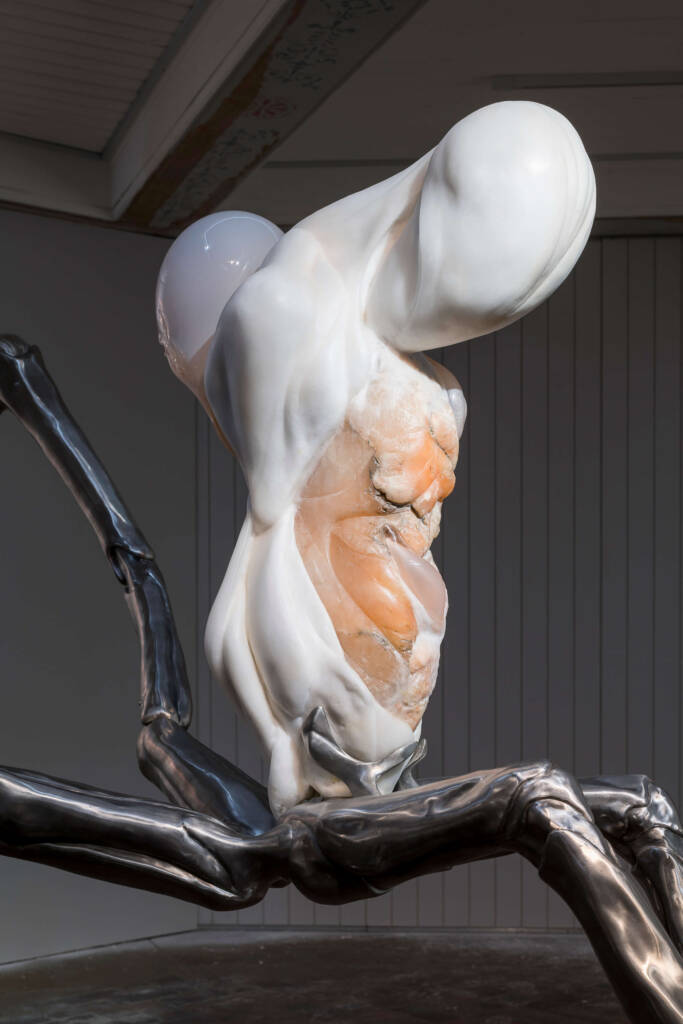
I had seen the centuries, and the vast dry lands; I had reached the nothing and the nothing was living and moist, 2018-2024, Stainless steel, pink alabaster, wax, blown glass, breath, pressure, 300 x 109 x 228 cm.
Courtesy of IVANA BAŠIĆ, ALBION JEUNE and FRANCESCA MININI, Photography by STEFAN KORTE
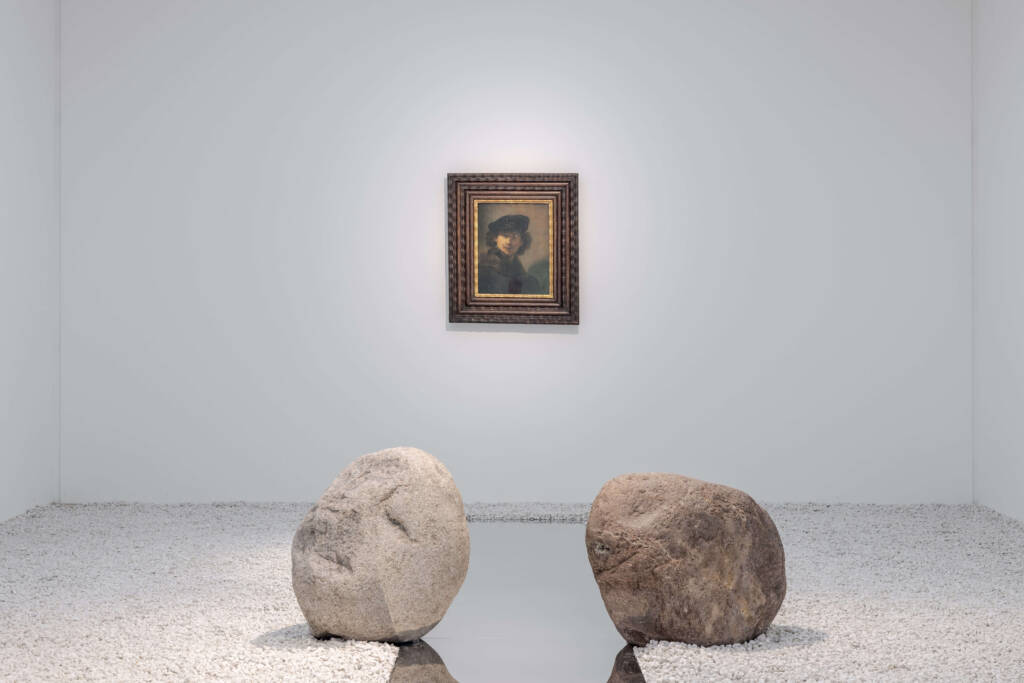
Photography by JACOPO LA FORGIA
Courtesy of STAATLICHE MUSEEN ZU BERLIN, NATIONALGALERIE
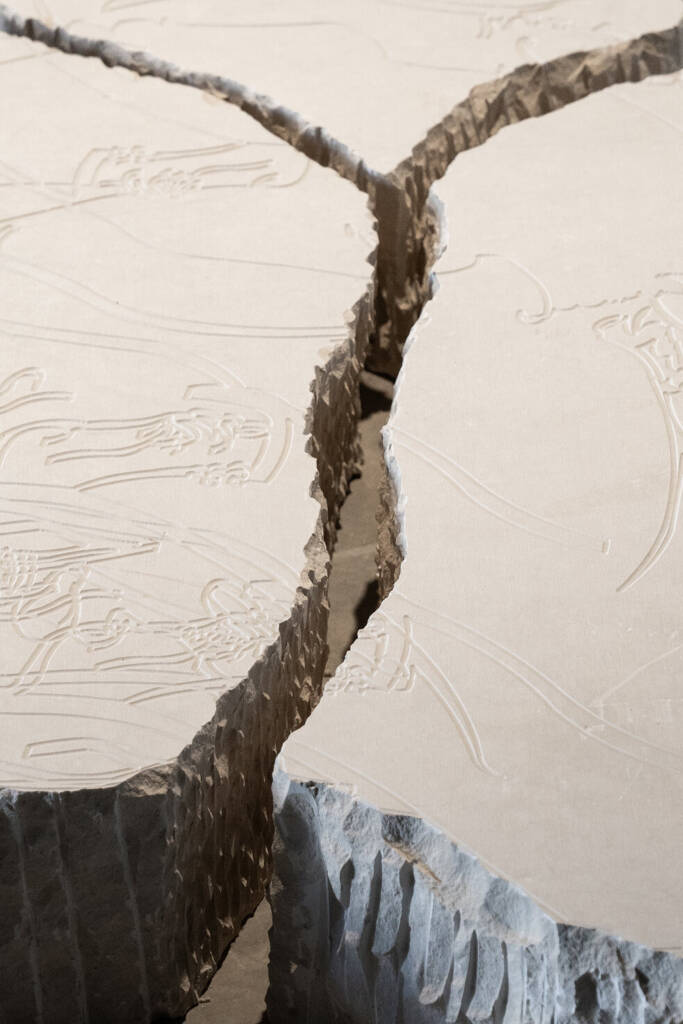
Ya’aburnee (يقبرني ( – (Untranslated Fragment I), 2025, Thala marble, 106 x 85 x 15 cm.
Courtesy of MONIA BEN HAMOUDA and SELMA FERIANI, Tunis/London
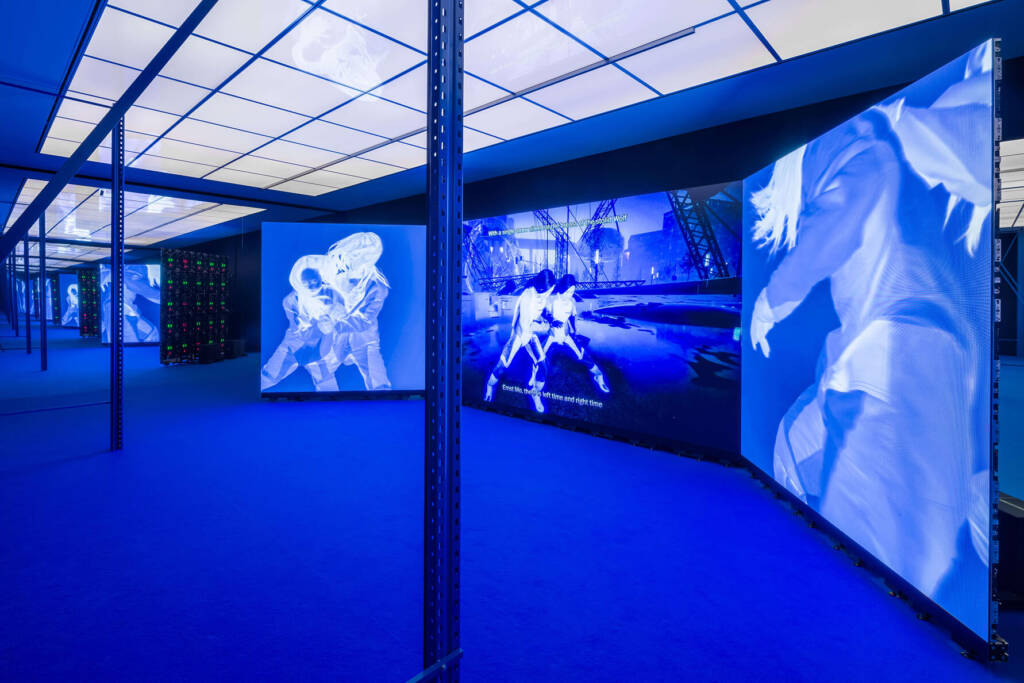
Photography by JACOPO LA FORGIA
Courtesy of STAATLICHE MUSEEN ZU BERLIN, NATIONALGALERIE
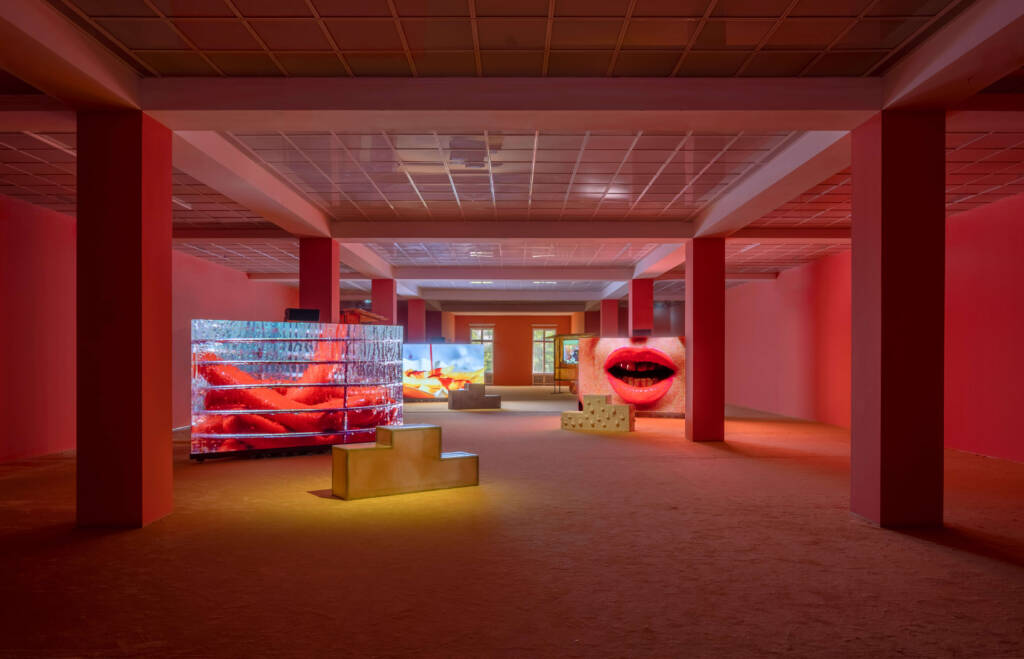
Photography by JACOPO LA FORGIA
Courtesy of STAATLICHE MUSEEN ZU BERLIN, NATIONALGALERIE
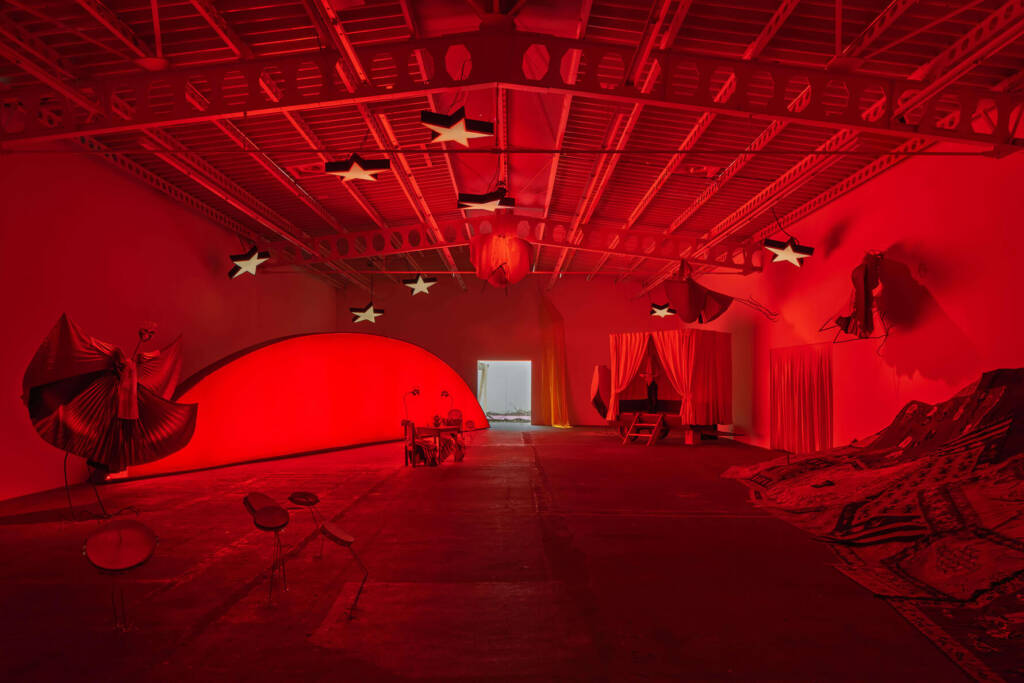
Photography by JACOPO LA FORGIA
Courtesy of STAATLICHE MUSEEN ZU BERLIN, NATIONALGALERIE
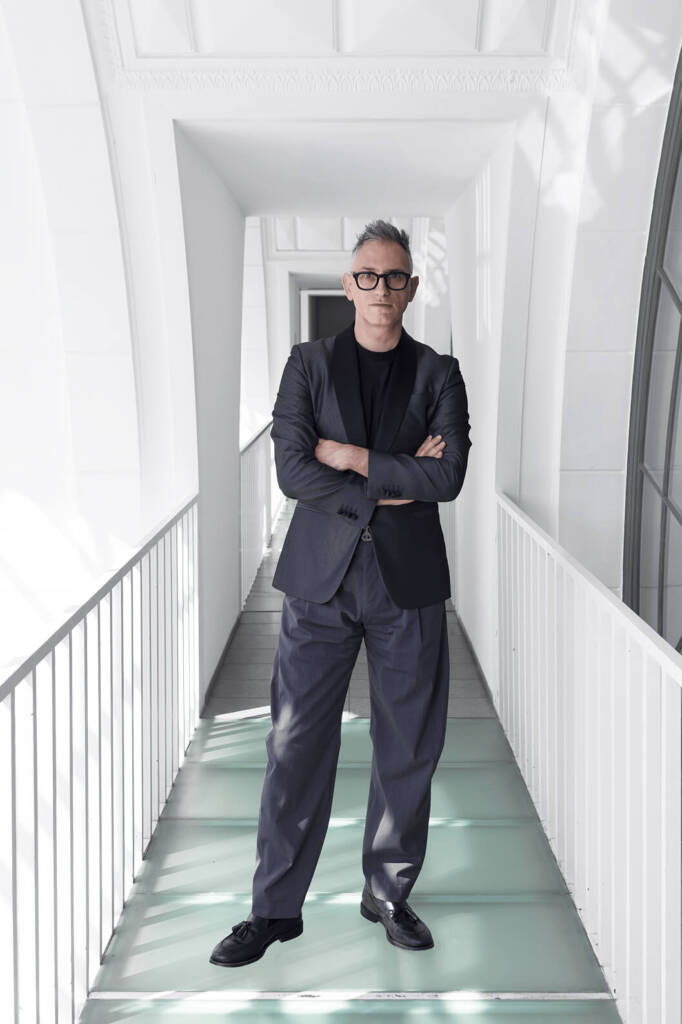
Photography by JACOPO LA FORGIA
Courtesy of STAATLICHE MUSEEN ZU BERLIN, NATIONALGALERIE
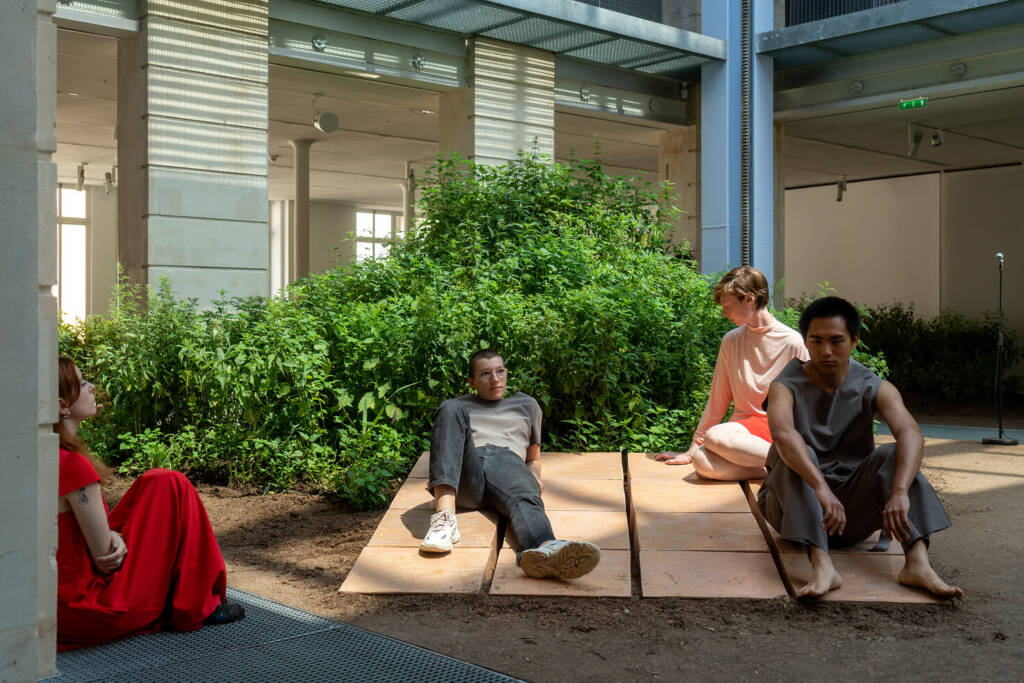
Study of Slope, Lafayette Anticipations, 2022
Courtesy of LINA LAPELYTĖ. Photography by MARC DOMAGE
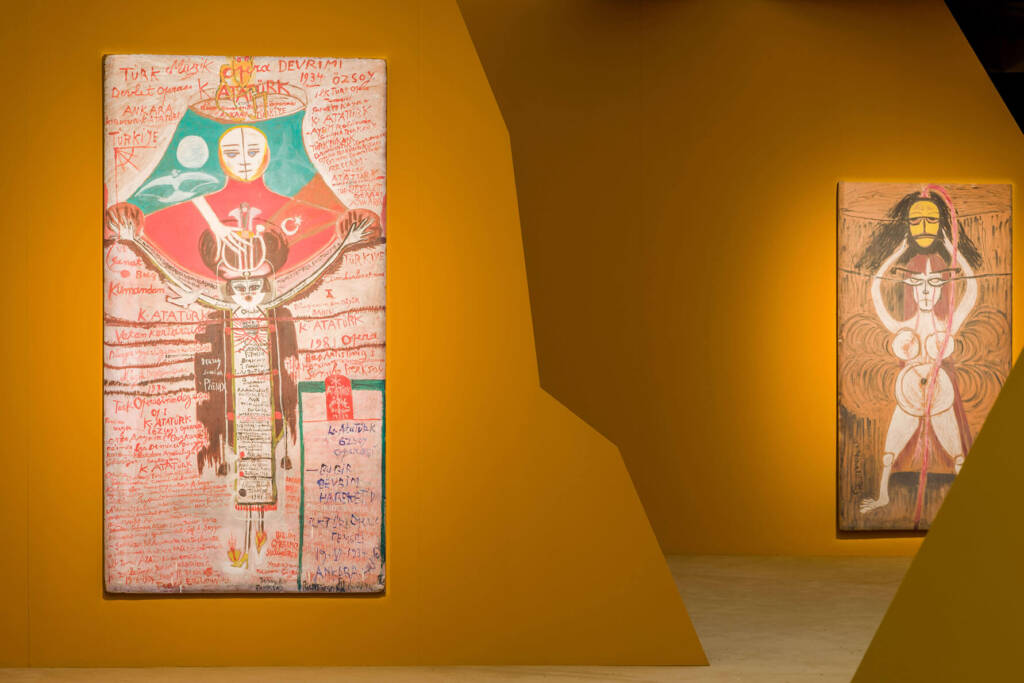
Photography by JACOPO LA FORGIA
Courtesy of STAATLICHE MUSEEN ZU BERLIN, NATIONALGALERIE
SK: How do you see Whispers on the Horizon contributing to the ongoing conversation about art’s role in processing collective memory and cultural transformation?
SB: By embracing fragility. Rather than monumental declarations, we invite fragments—of memory, of fiction, of dreams. In that way, the Biennial resists the idea of closure. It opens a space where collective memory is not a fixed archive but a shifting horizon.
SK: What do you hope visitors take away from this Biennial?
SB: I hope they leave unsettled—in the best sense. That they carry with them not conclusions but questions. That they recognize yearning as both a burden and a possibility. That they understand memory not as nostalgia but as an engine for imagining other futures.
SK: Looking ahead, how do you envision the evolution of Hamburger Bahnhof—not just in terms of programming, but as a cultural and social institution? What long-term priorities or transformations do you hope to pursue over the next five years, and how do these reflect your broader vision for the role of contemporary art in society?
SB: Our vision is to keep the museum porous—open to the city, to the world, to the urgencies of our time. In the coming years, this means deepening our global dialogues, expanding access across communities, and insisting that contemporary art is not a luxury but a necessity.
One milestone will be March 2026, when we will celberate Hamburger Bahnhof turning thirty in a global Gala. On that night, we will inaugurate a new tradition with three awards: a Lifetime Achievement Award, a Global Arts Patron Award, and a Changemaker Award. The idea is not only to honor artists and patrons whose work has transformed our field, but to use the museum as a platform to amplify the values we believe in: generosity, courage, and imagination.
The gala will bring together some of Berlin’s major cultural icons (institutions and individuals)—the Philharmonic, the Staatsoper, the Schaubühne, the Berlinale, Ottolinger, and others from diverse cultural disciplines—standing shoulder to shoulder in support of art at a time when narratives of decline and political pressure are closing in on our field. It will be a night where the city itself speaks with one voice: that culture is not fragile, but fiercely alive.
And perhaps this is the most exciting part: the gala will not be a culmination, but a beginning. A signal of how Berlin’s cultural community can come together to chart the next chapter, setting a new benchmark for what a museum—and a city—can be when it refuses to retreat.
SK: Are there any emerging institutions or curators whose work currently captivates you, and whose future development you are particularly eager to follow?
SB: I am drawn to curators who work from positions of precarity, outside the comfort of established systems—voices from Beirut, Lagos, Manila, whose institutions are often fragile but whose ideas are urgent. Their work reminds us that innovation often comes from the so called margins.
SK: How would you describe the future in 5 words?
SB: Precarious. Burning. Unfinished. Tender. Possible.
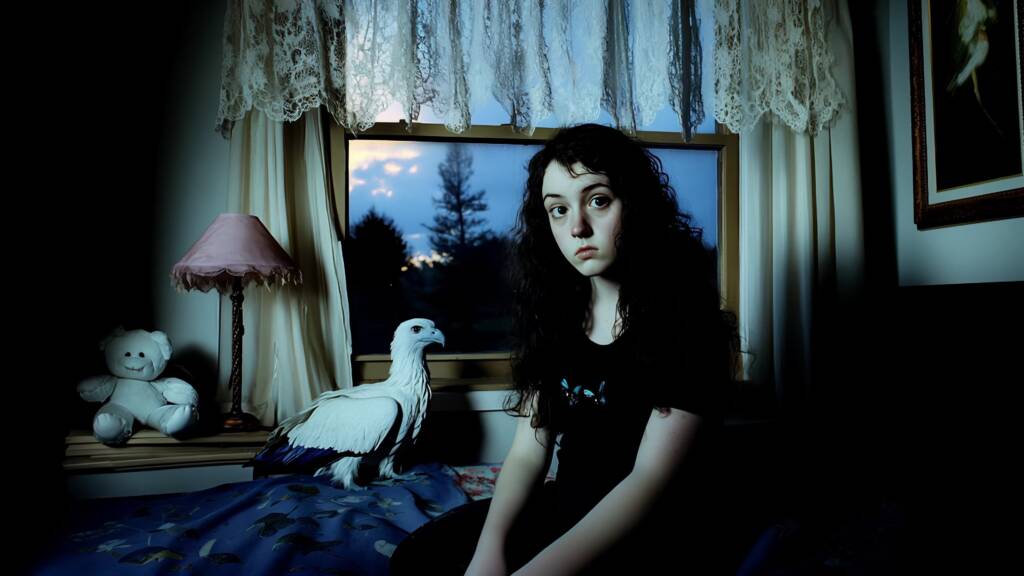
The Mineral Kingdom (Dark Green), 2025, Video installation, Color, sound, light, 37 min, looped, Dimensions variable, Still
Courtesy of JACKY CONNOLLY
